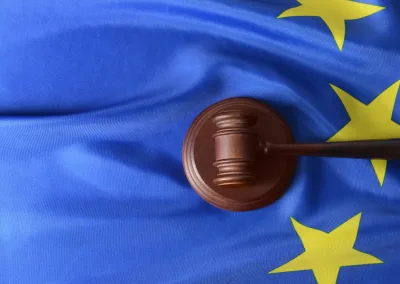President Donald Trump, in his first few weeks in office, has been forging ahead with executive orders, making good on promises made while campaigning. He has signed one such executive order (EO), “Reducing Regulation and Controlling Regulatory Costs”(1), which intends to do exactly as its title indicates.
In this EO, the key points are that a.) agencies would remove two prior regulations for each new proposed regulation, and b.) they will offset any associated cost of the new regulation to “be no greater than $0,”(1) what’s known as a “regulatory pay-go” (PAYGO) system.
The PAYGO system would “discourage agencies from continually adding new rules because they would be required to eliminate one outdated or duplicative regulation of the same approximate economic impact for each new rule they want to enact,” and would require “transparent and credible assessments of the economic impact of each regulation.”(6)
This will work something like a regulation trade for agencies, which includes a fiscal cap. Marcus Peacock (4) gives an extensive analysis and review of so-called “One In, Two Out” and the PAYGO system outlined in President Donald Trump’s executive order on regulatory costs and regulations. Canada, the United Kingdom, and Australia have all started these types of systems with intent to reduce regulatory burden and cost to companies, just as President Trump has done (5). So why all the excitement here in the United States?
According to an article (2) which reviewed this new executive order, this type of action is, in fact, not new at all. “The intent of Trump’s order isn’t new. The mechanics are.” (2) Presidents have long attempted to reduce regulations during their years in office. What is different about this order by the Trump Administration, is that each regulation will need to add no additional cost to companies or consumers. This means that large attention will be placed on evaluating the cost of the proposed regulation, rather than the typical cost-benefit analysis we’ve seen throughout the years, which can be highly subjective.
Some of us worry that this cost-only analysis could potentially negate all attention to the benefits of regulations for public health and safety. If the sole criteria for passing regulations pertains to the cost of them and none to the benefits, this, with comments made by President Donald Trump regarding the 75-80% of FDA regulations he intends to have pitched out, are definitely increasing the uncertainty in the Industry (3).
Some clarity and further explanation has been offered with a Q&A noting: “The EO’s requirements for Fiscal Year 2017 apply only to those significant regulatory actions, as defined in Section 3(f) of Executive Order 12866, an agency issues between noon on January 20 and September 30, 2017.”(7) While it has been stated that this order will not apply to “significant regulations,” there will be some effect on certain areas of FDA Guidance including areas of medical device manufacturing, filings and submissions, among others (8).
Overall, this plan, while good in intent and purpose for the American people and the economy, still leaves many questions about the exact nature in how this will unfold in various industries, and the effect it will have on companies and people in this country. The creation of new jobs in the FDA regulated industries while eliminating so-called red tape and speeding the process for approval of drugs and other innovative technologies is a great thing, but on the other hand… this is an unprecedented move made by President Donald Trump, and like him or not, it’s uncertain how it will all pan out in the coming months. EMMA International will keep you informed on the impact of this, as well as other EOs, in the months ahead, and the overall impact on our industry.
References:
- The Office of the Press Secretary, The White House. (2017, January 30). Retrieved from https://www.whitehouse.gov/the-press-office/2017/01/30/presidential-executive-order-reducing-regulation-and-controlling
- Greeley, Brendan. Trump’s New Math on Old Regulations, Bloomberg Businessweek. (2017, February 9). Retrieved from https://www.bloomberg.com/news/articles/2017-02-09/trump-s-new-math-on-old-regulations
- Brennan, Zachary. Trump to Pharma CEOs: 75% to 80% of FDA Regulations Will be Eliminated, RAPS. (2017, January 31.) Retrieved from http://www.raps.org/regulatoryDetail.aspx?id=26745&utm_source=Email&utm_medium=Informz&utm_campaign=Informz-Emails
- Marcus Peacock is a Distinguished Research Professor at the George Washington University Regulatory Studies Center.
- Peacock, Marcus. Implementing a Two-for-One Regulatory Requirement in the U.S., George Washington University. (2016, December 7). Retrieved from https://regulatorystudies.columbian.gwu.edu/sites/regulatorystudies.columbian.gwu.edu/files/downloads/Peacock_Implementing-Two-For-One%2012-2016_final.pdf
- Senator Warner, Mark R. To revive the economy, pull back the red tape, The Washington Post. (2010, December 13). Retrieved from http://www.warner.senate.gov/public/index.cfm/regulatory-paygo
- Office of Management and Budget, Executive Office of the President. Interim Guidance Implementing Section 2 of the Executive Order of January 30, 2017, Titled “Reducing Regulation and Controlling Regulatory Costs”. (2017, February 2). Retrieved from https://www.whitehouse.gov/sites/whitehouse.gov/files/briefing-room/presidential-actions/related-omb-material/eo_iterim_guidance_reducing_regulations_controlling_regulatory_costs.pdf
- Brennan, Zachary. Trump’s ‘Two Out, One In’ Regulatory Policy May Apply to Some FDA Guidance, RAPS. (2017, February 6). Retrieved from http://www.raps.org/Regulatory-Focus/News/2017/02/06/26765/Trump’s-‘Two-Out-One-In’-Regulatory-Policy-May-Apply-to-Some-FDA-Guidance/





